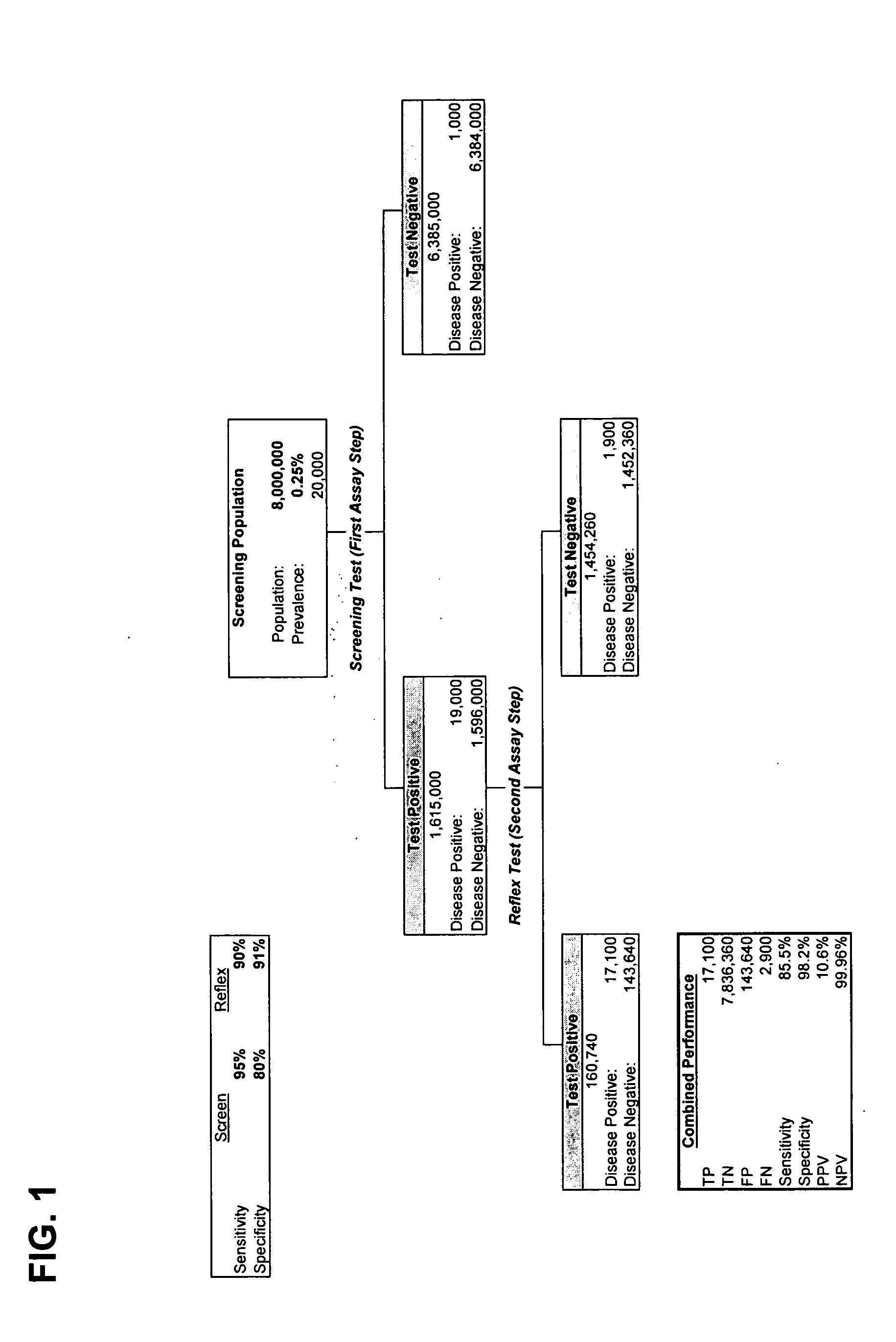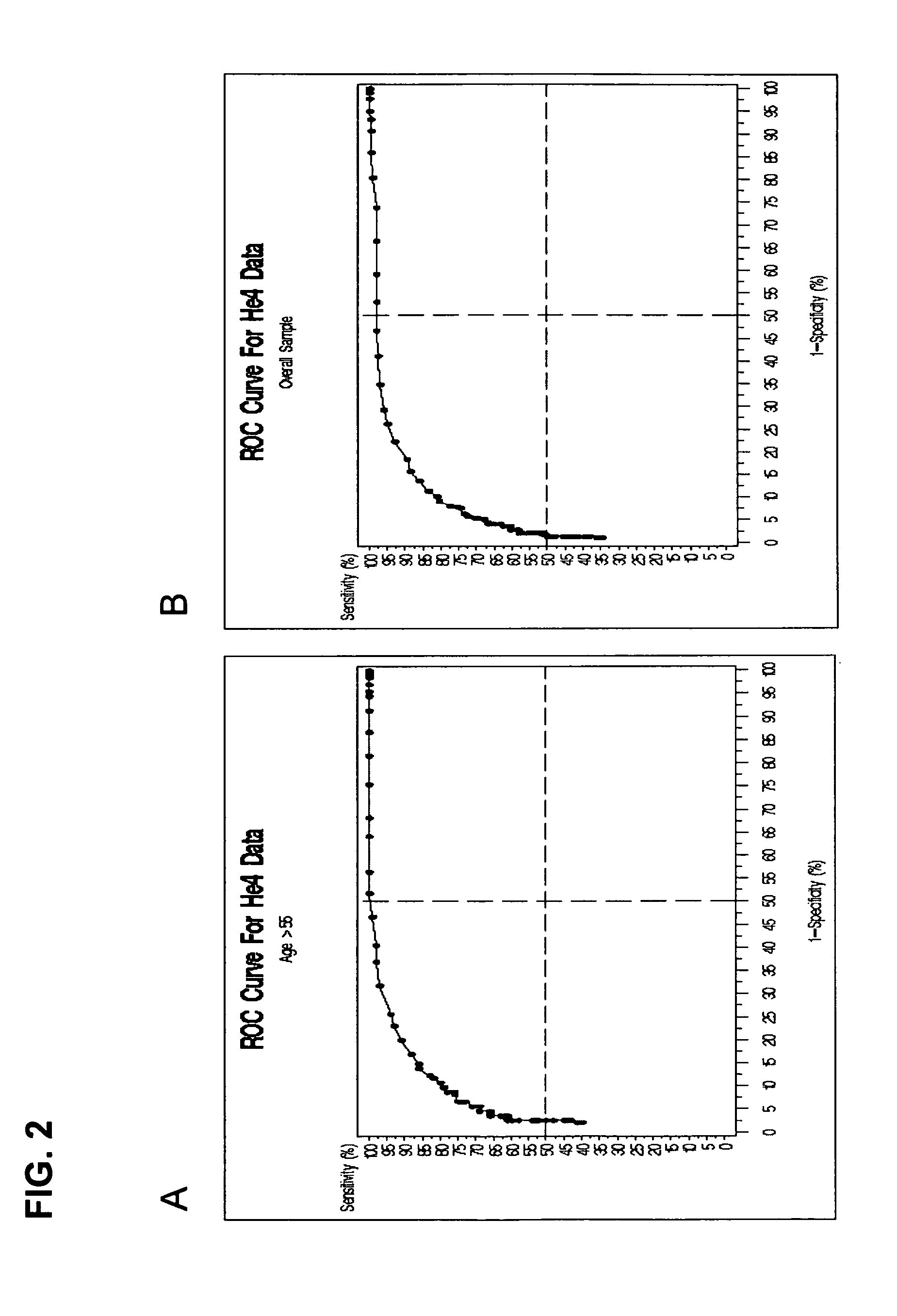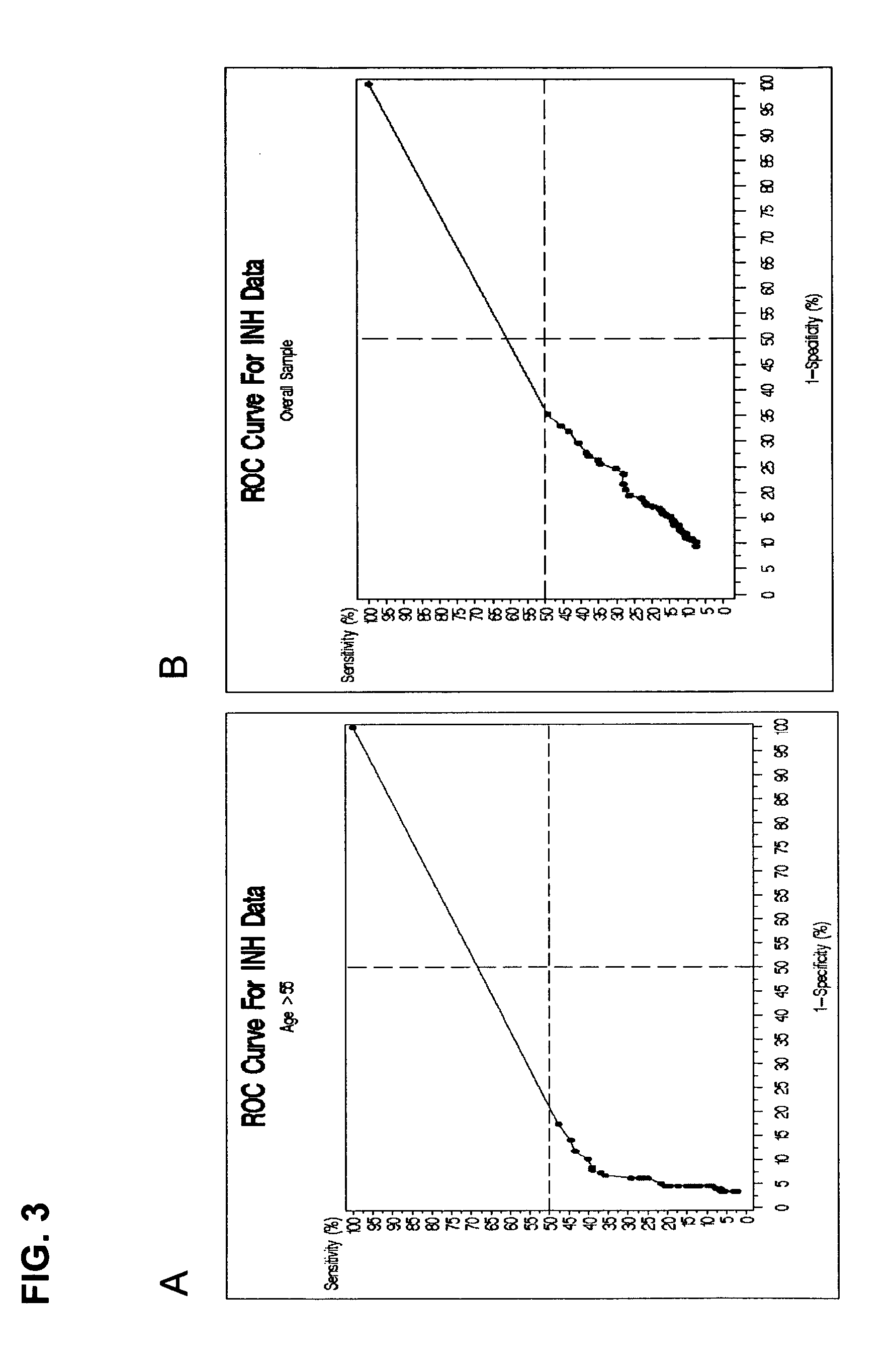Methods for identifying patients with an increased likelihood of having ovarian cancer and compositions therefor
a technology of ovarian cancer and compositions, which is applied in the field of methods and compositions for identifying women having an increased can solve the problems of increasing the likelihood of the patient having ovarian cancer, and achieve the effect of facilitating the detection of ovarian cancer and increasing the likelihood of having ovarian cancer
- Summary
- Abstract
- Description
- Claims
- Application Information
AI Technical Summary
Benefits of technology
Problems solved by technology
Method used
Image
Examples
example 1
Exemplary Method for Collection of Blood, Processing of Blood Into Serum, Serum Storage Conditions, and Serum Shipping Conditions
[0121] A sufficient quantity of blood was drawn by venipuncture into a Becton Dickinson Vacutainer red-topped collection tubes containing no additive (catalog number 366430). The lot number of the blood collection tube was recorded. Whole blood was not refrigerated or frozen. Processing of the whole blood to serum began immediately after collection of the blood.
Serum Preparation Procedure
[0122] Blood collection tubes were placed upright in a rack and stored at room temperature. The blood was allowed to clot for a minimum of 60 minutes and a maximum of 90 minutes from time of collection. Blood was thoroughly clotted before centrifugation. The time required for complete clotting for each sample was recorded.
[0123] After blood was thoroughly clotted, the samples were centrifuged at 1300×g for 10 minutes using either a swing-head or fixe...
example 2
Ovarian Biomarker Selection Study—Individual Biomarker Analysis
[0126] The purpose of the biomarker selection study was to evaluate the initial clinical utility of a set of fourteen candidate ovarian cancer biomarkers. The premise of the study was to be able to identify and quantitate the amount of each biomarker in a patient's serum. Biomarker protein expression in serum samples was detected using commercial or novel biomarker-specific antibodies in an ELISA format. Fourteen target biomarkers were analyzed, as described below in Table 1:
TABLE 1Candidate markersHE4CA125SLPIGlycodelinKLK6MMP7KLK10PLAU-RCTHRC1InhibinPAI-1ProlactinMUC1Alpha-1 anti-trypsin
Target Population and Demographics of the Study
[0127] In evaluations of this type, it is essential that the samples tested are representative of the target clinical population and that normal controls are demographically matched. A total of 900 patient serum samples were analyzed in this study. 200 of the samples were from ovarian ...
example 3
Ovarian Biomarker Selection Study—Multiple Biomarker Analysis
[0241] The logistic regression method was used for selection of optimal biomarkers for this study. Using logistic regression, stepwise selection starts off by finding the biomarker that produces the largest R-square value with the dependent variable. Then, given that the ‘best’ biomarker is in the model, logistic regression finds that next best biomarker in terms of adding to the R-square. This process of finding a set of biomarkers that adds to the R-square is stopped when biomarkers can no longer add to the R-square, in accordance with certain statistical criteria. These sets of biomarkers are not unique because some of the biomarkers have the same predictive performance.
[0242] Based on one selected model, a ROC plot can be produced, which provides the relationship between the sensitivity and specificity rates. Therefore, an appropriate specificity and sensitivity can be chosen in order to obtain an expected PPV with a...
PUM
| Property | Measurement | Unit |
|---|---|---|
| molecular weight | aaaaa | aaaaa |
| molecular weight | aaaaa | aaaaa |
| molecular weight | aaaaa | aaaaa |
Abstract
Description
Claims
Application Information
 Login to View More
Login to View More - R&D
- Intellectual Property
- Life Sciences
- Materials
- Tech Scout
- Unparalleled Data Quality
- Higher Quality Content
- 60% Fewer Hallucinations
Browse by: Latest US Patents, China's latest patents, Technical Efficacy Thesaurus, Application Domain, Technology Topic, Popular Technical Reports.
© 2025 PatSnap. All rights reserved.Legal|Privacy policy|Modern Slavery Act Transparency Statement|Sitemap|About US| Contact US: help@patsnap.com



